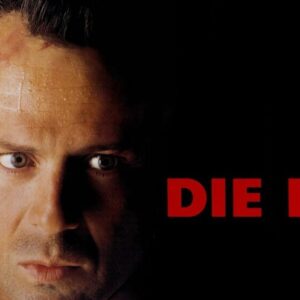Few actors in Hollywood can claim a career as versatile and long-lasting as Brad Pitt’s. Over the course of more than three decades, Pitt has evolved from a heartthrob with boyish charm to one of the most respected actors and producers in the industry. His journey through cinema is marked by his relentless pursuit of roles that challenge both him and the audience, and by his collaborations with visionary directors who have helped redefine his career. From Quentin Tarantino’s sharp-edged scripts to David Fincher’s brooding atmospheres, Pitt’s roles have not only solidified his status as an A-list actor but have also shaped modern cinema. However, it’s his unique relationships with these directors—both as an actor and a producer—that have left an indelible mark on Hollywood.
The Evolution of Brad Pitt’s Career
Brad Pitt burst into the public consciousness in 1991 with his unforgettable performance in Thelma & Louise, but it was the variety of roles he pursued afterward that cemented his place in cinematic history. From the vampire Louis in Interview with the Vampire to the schizophrenic mental patient in 12 Monkeys, Pitt demonstrated his willingness to take risks and step beyond the traditional confines of a leading man. Yet, it wasn’t just his acting that propelled him to new heights—it was the directors he chose to work with and the relationships he built with them.
Pitt has worked with some of the most influential directors in the modern era, each collaboration serving as a milestone in his career. Quentin Tarantino, David Fincher, and Alejandro González Iñárritu stand out as three auteurs who have played pivotal roles in shaping not only Pitt’s career but also modern storytelling. These directors represent different genres, tones, and styles, but all share an ability to extract a level of intensity, charisma, and vulnerability from Pitt that has transformed him from a movie star into a bonafide cinematic icon.
Working with Top Directors: Quentin Tarantino, David Fincher, and Alejandro González Iñárritu
When you examine Pitt’s filmography, you notice a thread of directors who have pushed the boundaries of narrative and performance, and Pitt’s work with these directors reveals a symbiotic relationship. Quentin Tarantino, known for his witty dialogue and violent, stylized direction, found a perfect muse in Pitt for Inglourious Basterds (2009). Pitt’s portrayal of Lt. Aldo Raine, the charming yet ruthless Nazi hunter, was a masterclass in balancing humor with menace, and it allowed Pitt to showcase his range in ways that previous roles hadn’t. The collaboration continued with Once Upon a Time in Hollywood (2019), where Pitt’s portrayal of stuntman Cliff Booth earned him his first Academy Award for Best Supporting Actor. Tarantino once remarked how Pitt’s performance “elevated” the film, noting that he has an uncanny ability to blend subtlety with magnetic screen presence.
David Fincher, on the other hand, has tapped into Pitt’s darker, more introspective side. Their partnership began with Se7en (1995), where Pitt played a young detective on the trail of a brutal serial killer. Fincher’s bleak, almost nihilistic approach to storytelling required an actor who could communicate not just the horror of the crimes but the internal disintegration of a man coming to terms with the worst of humanity. They reunited for Fight Club (1999), a film that pushed Pitt to embody a generation’s disillusionment and anger. Tyler Durden, the anarchic alter-ego of the narrator, was unlike anything Pitt had done before. Fincher’s meticulous attention to detail and relentless pursuit of perfection mirrored Pitt’s own work ethic, and together they created a film that remains culturally and philosophically significant.
Alejandro González Iñárritu offered Pitt yet another dimension of artistic exploration with Babel (2006). Known for his intricate, often harrowing depictions of human connection and disconnection, Iñárritu cast Pitt as Richard, a grieving father navigating a tragic event in Morocco. The role was emotionally taxing, demanding Pitt to strip away the glamour and charisma that had defined much of his earlier work. Iñárritu’s immersive, often grueling filmmaking process allowed Pitt to dig deep into the raw emotions of a man overcome by guilt and helplessness. In interviews, Pitt has credited Iñárritu for teaching him the value of patience in storytelling and the power of vulnerability in performance.
Unique Working Relationships: The Creative Process and Synergy
What makes these director-actor relationships so compelling is how their creative processes align with Pitt’s own evolving artistic ethos. Pitt’s collaborations with Tarantino are filled with an element of fun and unpredictability. Tarantino has often mentioned that Pitt’s improvisational skills bring a level of authenticity to his characters. For example, the now-famous scene in Once Upon a Time in Hollywood where Cliff Booth faces off against Bruce Lee was largely influenced by Pitt’s on-the-spot decisions, including the nonchalant way he reacts to Lee’s aggression. Tarantino’s trust in Pitt’s instincts is evident throughout the film, and the two share a mutual respect for each other’s craft.
Fincher’s process, by contrast, is far more exacting. Known for demanding countless takes to get the perfect shot, Fincher has pushed Pitt beyond his comfort zone in ways that have deeply influenced his acting technique. In Fight Club, Fincher’s insistence on multiple takes of the same scene allowed Pitt to fully inhabit the chaos and volatility of Tyler Durden. Fincher has commented that Pitt thrives under this pressure, and their collaboration has continued to evolve, most notably in The Curious Case of Benjamin Button (2008), where Pitt portrayed a man aging in reverse. The role required not just physical transformation but also a deep emotional resonance, and it earned Pitt his second Academy Award nomination.
With Iñárritu, Pitt found a director whose thematic focus on human frailty matched his own desire to explore flawed, complex characters. The collaborative environment on Babel was emotionally intense, with Iñárritu often pushing his actors to the brink of exhaustion to elicit genuine reactions. In one scene, where Pitt’s character Richard faces the horrifying realization that his wife’s life is in danger, Pitt reportedly stayed in character for hours between takes to maintain the emotional intensity required. Iñárritu’s hands-on approach created a space where Pitt could fully engage with the depth of the character’s trauma, and the result was one of Pitt’s most critically lauded performances.
Behind-the-Scenes Stories: Pitt’s Influence on Iconic Films
Pitt’s contributions to his films often go beyond his on-screen performance. His input, particularly in collaboration with Tarantino, has shaped the tone and style of key scenes. During the production of Inglourious Basterds, for instance, Pitt worked closely with Tarantino to refine his character’s Southern drawl and mannerisms. This attention to detail, combined with Pitt’s innate charisma, transformed what could have been a straightforward role into one of the film’s standout performances.
In Fight Club, Pitt’s willingness to physically transform himself for the role of Tyler Durden—a lean, sinewy figure with a chipped tooth and numerous scars—helped Fincher achieve the raw, primal energy needed for the character. Pitt has often remarked that working with Fincher allows him to explore the darker, more philosophical aspects of his characters, a process that requires complete trust in the director’s vision.
Pitt as a Producer: Shaping the Industry
Brad Pitt’s role as a producer, particularly through his production company Plan B Entertainment, has given him another avenue to influence the kinds of films being made in Hollywood. Plan B has produced critically acclaimed films such as 12 Years a Slave (2013), The Big Short (2015), and Moonlight (2016), all of which have won Academy Awards. His role as a producer has allowed him to support filmmakers who share his passion for storytelling that pushes boundaries and challenges societal norms.
Pitt’s producing efforts have also influenced the directors he chooses to collaborate with. His work behind the camera means that he approaches his roles with a deeper understanding of the entire filmmaking process. Directors like Fincher and Iñárritu have praised Pitt for his ability to think like a producer while acting, a skill that enhances the collaborative process and allows for a more holistic approach to filmmaking.
Collaboration Insights: Mutual Influence
Pitt’s collaborations with these directors have not only shaped his career but also the films themselves. Tarantino, for instance, has spoken about how Pitt’s effortless cool and deep understanding of character elevate his scripts. In Once Upon a Time in Hollywood, Pitt’s portrayal of Cliff Booth added layers of melancholy and introspection that weren’t fully fleshed out in the script, giving the character a poignant sense of nostalgia.
With Fincher, the dynamic is different. Fincher’s meticulous direction often contrasts with Pitt’s more instinctive approach to acting, yet this tension creates some of the most memorable moments in their films. Their collaboration is a dance between control and chaos, resulting in performances that are both precise and organic.
Pitt’s Impact on Hollywood: Pushing Boundaries
Brad Pitt’s career is a testament to his ability to adapt, grow, and push the boundaries of both acting and filmmaking. His collaborations with directors like Tarantino, Fincher, and Iñárritu have not only defined his career but have also had a lasting impact on Hollywood. Pitt’s choices reflect a deep commitment to artistic integrity, whether he’s acting in a gritty thriller or producing a socially conscious drama.





